Search
Search Results
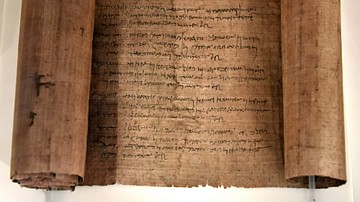
Image
Papyrus Scroll with Farmers Names
This papyrus scroll is written in the Greek language and mentions a list of farmers; the number and size of land given to them were mentioned. In addition, the list also included fishermen, flute players, threshers, millers, sheep breeders...

Image
Papyrus of Ani
The Papyrus of Ani, a text of The Egyptian Book of the Dead, was prepared for the priest Ani of Thebes (c. 1250 BCE) and included among the grave goods of his tomb. It includes a number of chapters from the Book of the Dead.
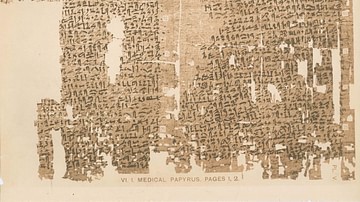
Image
Kahun Gynaecological Papyrus
The Kahun Gynaecological Papyrus (c. 1800 BCE) deals with conception and pregnancy issues as well as contraception. It is kept in the Petrie Museum of Egyptian Archaeology.
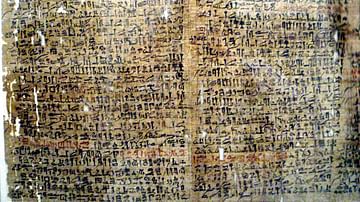
Image
The Westcar Papyrus (Detail)
Sheets of the Westcar Papyrus, Egyptian, date disputed. (Altes Museum, Berlin)

Video
Ancient Egyptian papyrus in the Book of the Dead exhibition at the British Museum
Preparing pieces of papyrus ready for display in the exhibition Journey through the afterlife: ancient Egyptian Book of the Dead
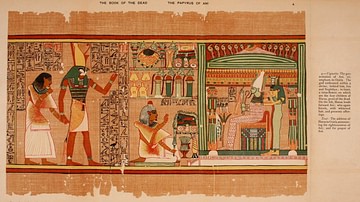
Image
Negative Confession, Papyrus of Ani
Ani's soul is acquitted after the Negative Confession.
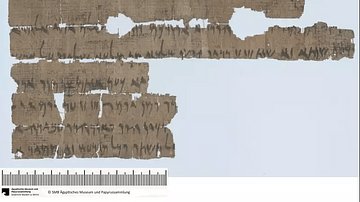
Image
The Passover Papyrus from Elephantine
A papyrus letter, written in Aramaic, from the fortified island of Elephantine in Egypt. The letter was written c. 419 BCE by a Jewish man named Hananiah and is addressed to his brother Jedoniah and the rest of the Jews garrisoned at Elephantine...

Article
The Magical Lullaby of Ancient Egypt
The Magical Lullaby (popularly known as Charm for the Protection of a Child) is an inscription from the 16th or 17th century BCE. The poem exemplifies the ancient Egyptian's personal religious and spiritual practices as it is a spell which...

Image
Detail of Tameni Funerary Papyrus
Detail of the Funerary Papyrus of Tameni, depicting the god Geb and the goddess Nut. Egypt. Third Intermediate Period (c. 1069-525 BCE). (Courtesy of the British Museum)
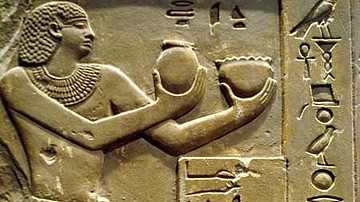
Definition
First Intermediate Period of Egypt
The First Intermediate Period of Egypt (2181-2040 BCE) is the era which followed the Old Kingdom (c. 2613-2181 BCE) and preceded the Middle Kingdom (2040-1782 BCE) periods of Egyptian history. The name was given to the era by 19th-century...